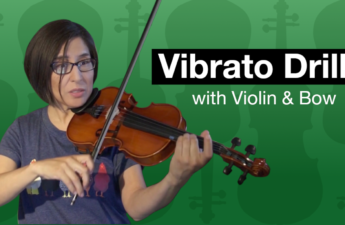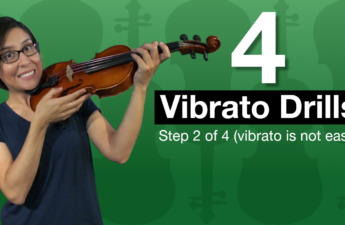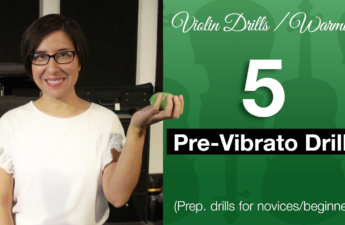The D major one octave scale is ussually learned along with the A major one octave scale. You can practice these scales 3 ways to improve your intonation, posture, and bowing.
To learn scales on a violin, you will need:
- A tuned violin. Make sure all of your strings are in perfect tune
- A tuner or any audible reference that will help you hit the right note.
- (For novices) A finger board guide or stickers to indicate where each finger needs to land in order to hit notes on the scale. Eventually, with enough practice you want to learn the notes without the use of any visual guide.
For anyone who is in the beginning stage of playing, I highly recommend using stickers or a guide to help you get started right away.
D major one octave scale:
– start with open D
– First finger will hit E natural
– Second finger will go down a whole step from the first finger to hit F#
– Third finger will go a half step down to hit G
– Then play open A
– First finger will hit B
– Second finger will go down a whole step to hit C#
– and finally third finger will go down a half step to hit D
First way to practice: Get started and play the D scale using only your first three fingers and using slow bow strokes.
Second way to practice: Once you learn the D major scale, take your practice further by using bow slurs. That means you will play more than 1 note per one bow stroke. Start with playing 2 notes per bow stroke
You can gradually add more notes per bow stroke until you’re able to 4 notes per one bow stroke.
Third way to practice: When you have become accustomed to playing the scale using slurs, take your practice even further by including your 4th finger. In this case you will play the open A with the 4th finger on the D string. The fourth finger will go one whole step down from the third finger to hit E.
You can download a playback track that has piano and metronome to practice your d major scale here: D Major One Octave Scale Piano & Metronome .
It’s also important to practice the arpeggio of every scale you learn simultaneously. Lets go over the Arpeggio for the D major scale which is open A, 2nd finger on C#, open E and third finger on A.
It’s also important to practice the arpeggio of every scale you learn at the same time. For the D major Arpeggio you will play open D, 2nd finger on F#, open A and third finger on D.


